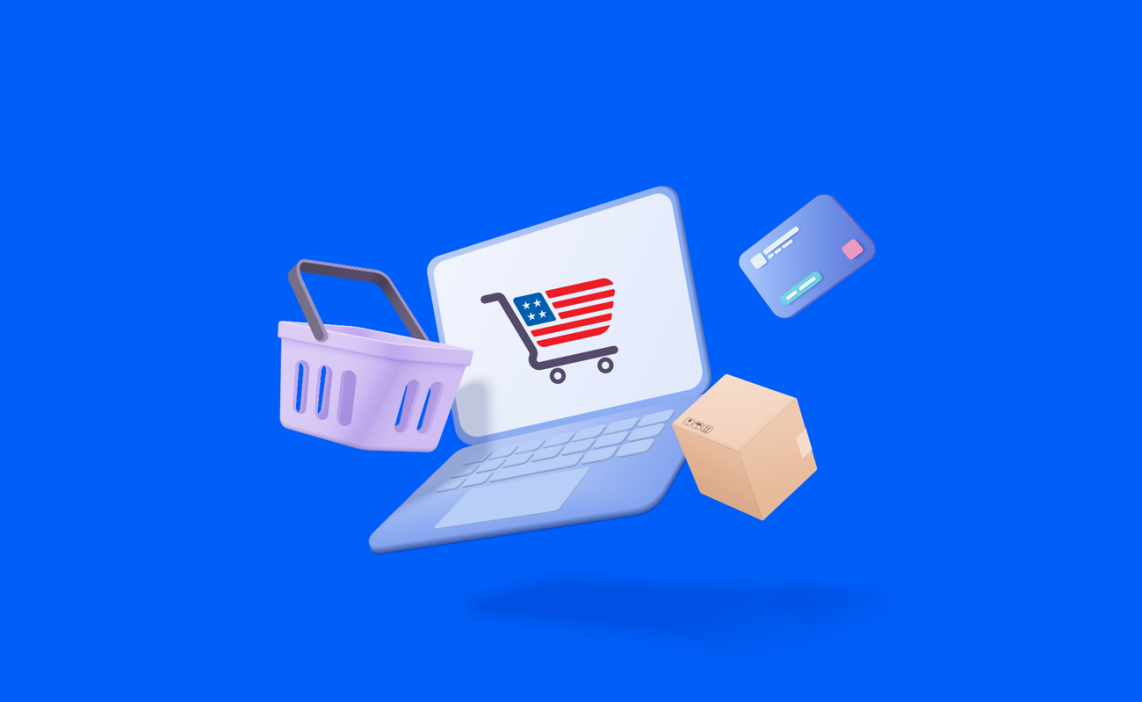E-commerce companies around the world can quickly scale their businesses by taking steps to sell to the United States.
Home to one of the largest per-capita online buying market on the planet, U.S. consumers comprise 4.25 percent of the population but make 19 percent of all online purchases.
Tapping the U.S. market via cross-border e-commerce can be difficult, owing to fierce competition, but once established foreign sellers can accrue a large chunk of their revenues from the U.S.
The key is to not only comply with safety, consumer protection, and fair competition laws in the U.S. but also to devise the strategies and support structures to stand out among U.S. consumers. This article will provide the practical advice for any e-commerce entrepreneur who wants to learn how to sell in the USA.
I’m from the government, and I’m here to help
Many cynical Americans subscribe to the theory that this is one of the biggest lies ever told. However, when it comes to U.S. Customs and Border Protection and other regulatory agencies, it’s mostly true. Sure, these regulators work to sniff out unsafe, unfair, and illegal practices, but they also facilitate legitimate commerce. All these agencies maintain websites that outline the laws and make it relatively easy to comply. E-commerce businesses wanting to sell to the United States should start by reading up on customs laws and the regulations covering the types of products to be sold.
Then, you’ll need to register as a foreign for-profit corporation. This is essentially your U.S. business license, though you get it from a specific state. For best results, register in the state where one of your fulfillment centers will be located.
You will also have to charge and remit sales tax to any state your company has a “nexus” – that’s either a physical presence such as a store or distribution center, or sales that reach a specific monetary level. In practical terms, you probably will have to calculate, collect, and pay sales to taxes to every jurisdiction.
This is not a simple task, as states, counties, and cities can set their own rates. Do yourself a favor and pay a vendor to install a plugin that adds on the tax at checkout and pay each jurisdiction.
Prepare for success
As you expect your efforts to sell to the United States to pay off quickly, you should prepare to keep your new customers happy with your service. As with any cross-border e-commerce initiative, that means fulfilling orders quickly and seamlessly. To accomplish that, you’ll need an U.S.-based center and a partner who will warehouse and ship your goods to buyers.
American consumers are accustomed to instant gratification. They often expect e-commerce sites to offer next-day or expedited delivery at no extra cost.
Depending on your needs, these vendors can assist with other customer service and operational tasks such as managing returns, receiving your bulk orders, and even paying tariffs and sales taxes.
With your fulfillment agreement in place, you can begin shipping product to your states-based warehouse. Send it in bulk to keep cargo rates as low as possible. Again, hooking up with a professional can remove much of the anxiety out and minimize the chance of making mistakes that could hamstring the launch of your e-commerce endeavor in the U.S. A freight forwarding outfit can ease the journey to the U.S. from your manufacturer or your stockpile in your home country.
Now is the time to “Americanize” your site to prepare it for cross-border e-commerce. Start by adding imperial weights and measures, sizes, and dollar pricing. Create a marketing calendar that targets U.S. holidays – Thanksgiving, election day, Labor Day, and Independence Day, in particular.
Adjust your website’s spelling and nomenclature to U.S. English, especially if you’re selling tires, diapers, cookies, or potato chips rather than tyers, nappies, biscuits, crisps, or other products whose descriptions change as they cross the pond.
Unless you’re selling luxury goods, you may want to adopt a more casual tone than is taken by marketers in many European, Asian, and Latin American marketplaces.
Partnering with e-commerce platforms
Perhaps the most important partnership commitment you’ll make lies in your choice of e-commerce platform. You probably won’t go wrong selling to the United States via any of the large platforms:
Shopify
WooCommerce
Wix
Big Commerce
and dozens of others.
They all differ slightly in pricing, services, user-friendliness, focus, and other variables. When making your choice, consider these features:
Sales features – Managing sales and collecting payment lie at the heart of e-commerce. Your platform should make it easy. To sell to Americans, you’ll need to accept the dollar, of course, but also cryptocurrencies. And you’ll want to accept various credit cards and digital wallets. U.S. customers also expect you to keep the items you advertise in stock and maintain a liberal return policy, so you may want your platform partner to manage these tasks.
Design customization – The number of storefront templates available vary widely across platforms. If you find a free template you like and that appeals to American sensibilities – including diversity, inclusion, and social justice – great. If not, be sure to account for the cost of a paid template, the time you’re willing to invest in customizing your site, and the sophistication of the tools available on the platform to do it.
Security and user experience – As mentioned above, U.S. consumers are spoiled by many time-saving and automated processes. They expect nothing less when shopping online, so you never want to discourage motivated shoppers by forcing them through cumbersome product searches, complicated check-out procedures, or high-friction log-in or payment authentication. Of course, allowing their data to become compromised or permitting fraudulent purchases in their names is also unforgivable. Pick a platform that safeguards data while streamlining the shopping experience.
Support – You can’t make money if your site goes down. You should expect your platform to maintain resources to get up back up and running as fast as possible. This means not only fast responses from technical support but also an extensive library of “fix-it-yourself” documentation such as FAQs, how-to guides for common issues, user forums, and other resources you can access to solve problems without wasting time reaching out to external experts.
Cost structure – Most platforms offer tiered services, typically “basic,” “standard,” and “enterprise” versions with features and services that increase along with monthly fees. If you’re just beginning to sell to the United States market, you may benefit from a plan that carries a lower monthly rate and charges more for payment processing. This way, you can keep fixed costs at a minimum and pay increasing variable costs only as you generate revenue to cover them.
Promotions and business development – Collecting, collating, and reporting sales and customer data can prove the most valuable service your platform performs. This empowers you to analyze trends and performance to optimize your product line and promotional strategy. If your e-commerce strategy relies heavily on SEO (it should) pick a platform partner that allows you to incorporate your blog and social media efforts and a mobile-optimized storefront or application. U.S. customers, like many consumers in developed countries, are always on the go and obsessed with leveraging their online presence.
Selling to the United States’ 330 million consumers is a worthy goal for any cross-border e-commerce company. Companies based in countries that speak English, have low manufacturing costs compared to the United States, and/or deal in exotic, ethnic, or locally sourced handmade items are best positioned to sell to the United States.
Those that master the nuances of attracting American consumers with deep pockets and a preference for shopping online.


